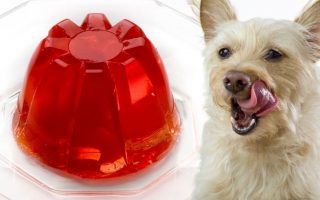I love how expressive labs are. In the same way as humans – labradors can show moods and have regular communication with humans all the time by means of body language. While Labradors can’t speak to us verbally. A continuous conversation occurs on the part of both the human and the Labrador’s by means of body language.

No matter whether he’s looking at you, curling up the tail between his legs, pricking his ears, or simply yawning. No matter how complex they are. Labradors possess a natural communication system that enables them to communicate according to their moods. Such as when they are happy, scared, upset, relaxed, and so forth.
As we become more adept at reading our labrador’s body language. We are more likely to succeed at identifying the things that make them happy.
What are the signs your labrador uses to communicate? How are you going to recognize them? Let’s find out.
Labrador’s Body Language
There have been many efforts to close the gap between humans and their dogs in communication. But none of them have succeeded beyond body language and tone.
As your labrador is unable to express himself verbally, body language is his preferred method of communication.
Body language in dogs, including Labradors, encompasses a set of facial expressions and body postures. Used to convey their emotions and intentions to their surroundings.
But why it is so important to recognize your labrador’s body language?
Due to the fact that you must be aware of how your Labrador is feeling so that you can act accordingly such as to the following conditions:
- Worried or scared
- Annoyed or angry
- Insecure or scared
I believe this is a very valuable skill to acquire and I am sure you will find it useful in developing a healthy bond with your labrador.
Today, in this guide we will walk you through labrador’s different body language signs. To help you get better at learning them to strengthen your bond with your labrador dog.
How To Get Better At Recognizing Your Labrador’s Body Language
The body language of Labradors, and even other dogs. Employ a variety of communication techniques for expressing their feelings in various circumstances.
As a first step to recognizing them, let’s break them down into the various parts of the body. You should be paying attention to, including their facial expression and how they hold their tail.
Understanding how dogs communicate will enable you to pay attention to every part of their bodies in order to determine how they feel.
Each part of the body must consider, and then the whole dog should considered. As there may be minor differences that might mislead the reader.
Now, let’s take a look at our labrador’s body language from the perspective of different parts of his body:
1. Eyes Reveal A Lot
The same as with a human being, reading your dog’s eyes is a great way to learn more about them. Just look into their eyes for a moment and you will notice that they reflect how they are feeling right now.
You can tell something about how they feel if they stare, turn their heads, look wide-eyed, or squint – these are all telling signs that they feel something:
Averted Eyes – This is a sign of respect, or of submission. An away-looking dog is one that does not wish to appear aggressive or threatening. On the other hand, it may also indicate that they are uncomfortable with their current situation and may feel threatened.
Staring straight into your eyes – If your labrador appears to be staring directly into your eyes or is acting tensely. You should consider it a danger, so you should gradually turn your head away. It is not the same as looking right at you in a calm, happy state. Because they learn that this is acceptable behavior when they want attention.
The normal eye – Usually when labradors are feeling comfortable and satisfied, then their eyes assume an almond shape that is normal eyes.
Rounding the eye – Labradors tend to round their eyes when confronted with danger, frightened, or overwhelmed.
Squinted eyes – When the Labrador is sick or in pain, droopy eyes may appear, making them squint, but it can also mean that they spoil or have submission problems. The situation should view holistically.
An eye of whale – Labradors have an eye of the whale when they focus on you, but not looking at you directly, but looking from the corner of their eye, with their whites exposed, these types of eyes refers to as “whale eyes”.
It is common for dogs to display this behavior when they are going to be aggressive, at which point, you should put down what you’re doing and leave your labrador alone.
The behavior often observed when they have something in their mouths such as bone or their favorite toy.
2. Their Yawn
Yawning is something that they do from the very beginning of a situation, as a soothing response whose purpose is to create a sense of calm during times of stress or confusion.
As humans do, the canine species yawn when they are tired, but the gesture does not appear transmissible.
Yawns aren’t the only sign, so it is best to keep an eye on your labrador’s mouth, which reveals a lot.
3. Mouth Speaks Louder Than Words
Even with its mouth closed, a dog says a lot. You can tell a lot about your Labrador’s mood by the way they handle their mouth, lips, and teeth.
Mouth situations related to different feelings are as follows:
- In times of aggression, your labrador will show off its teeth by lifting its top lip and its lower lip downward, squinting its face, glaring at the viewer, or growling. The labrador shows teeth with the intention of biting.
- Your labrador always keeps his mouth shut when relaxed or in a good mood, but opens a little while sweating to cool himself down.
- Labradors may lick their lips when stressed. Although submissive behaviors rarely progress to aggression, if your labrador is fearful, be aware that it may become aggressive if it continues to be stressed.
- Many people are confused by this one – the submissive smile of the Labrador – during times of extreme submissiveness, dogs pull their lips upward while showing their teeth. Submissive body postures are seen with these signals, such as lowering the head and squinting narrowed eyes. Many people mistakenly believe their dog is aggressive simply because he shows his teeth. With a submissive grin, however, the dog is communicating yet another opposite message: it is trying to be accommodating, rather than aggressive.
4. Pay Attention To Their Ears
As opposed to humans, labradors are very flexible in their ear movements, therefore, the higher his ears are, the greater the sense of confidence he feels. The more they are backed up and piled up, the more he is fearful.
- A labrador feels at ease and relaxed when his ears are in their natural position, though, when something catches his attention he holds them higher to focus on the object that piqued his interest.
- Your labrador’s ears will be pricked up during aggressive behavior, unlike during relaxation or alertness, you’ll also notice other aggressive behaviors, so keep an eye out for those as well.
- When your labrador is friendly, he will tuck his ears back all the way to his head and display a peaceful expression.
- A scared labrador can be recognized by the fact that it has flattened ears or is clinging to either side of its head.
5. A Labrador’s Tail Has A Lot To Say
We’re all familiar with the saying “Happy dogs have wagging tails”? Clearly not true! However, this isn’t the case all the time, since dogs also wag their tails in situations of aggression.
In adulthood, it is easier for us to connect to the feelings of dogs owing to our experiences, however, to a young child who has never experienced a dog, telling him or her that a happy dog has a wagging tail may put them in danger.
Discover how different emotions affect your labrador’s tail.
Fear
The tucked tail between the legs indicates fear or humiliation. Other canine body language indicators include shaking, panting, and drooling that can be perceived as body language.
Happiness
When your labrador is happy, they’ll have their tails at their natural positions, which will wag slightly from left to right. When a dog is extremely happy, you will see vigorous tail wagging, and he might even wag his tail and hips as well.
Aggressive
What most people fail to realize is that wagging tails may be a sign of aggression, danger, or dominance. An extremely high tail, firm, and swaying deliberately to the right and the left is a sign of self-assurance and dominance. It shows that he has no intention of backing down.
Wrapping Up
Dogs have both loud and obvious body language as well as subtle body language almost hidden from view. At times, the body language is so obvious that it is difficult to misunderstand. Other times, it is a little more subtle.
You’ll see that your lab always communicates exactly how he or she feels when you learn how dogs communicate. You can always see their hearts if you listen carefully. It is therefore important to pay attention to them when they are attempting to communicate with you.
FAQs
Question 1: What are the body signs that show that my labrador loves me?
Answer: Labradors show different signs to show love to their owners such as licking, wagging tail, following around, sitting nearby, and much more.
Question 2: What are labradors’ favorite places to be petted?
Answer: Dogs tend to be relaxed when they receive petting on the chest, shoulder, or at the base of their neck.
Question 3: What is the communication method of labradors?
Answer: Labradors communicate through sight, smell, sound, and touch. Barking, wagging tails, high ears are all forms of communication exhibited by labradors.







